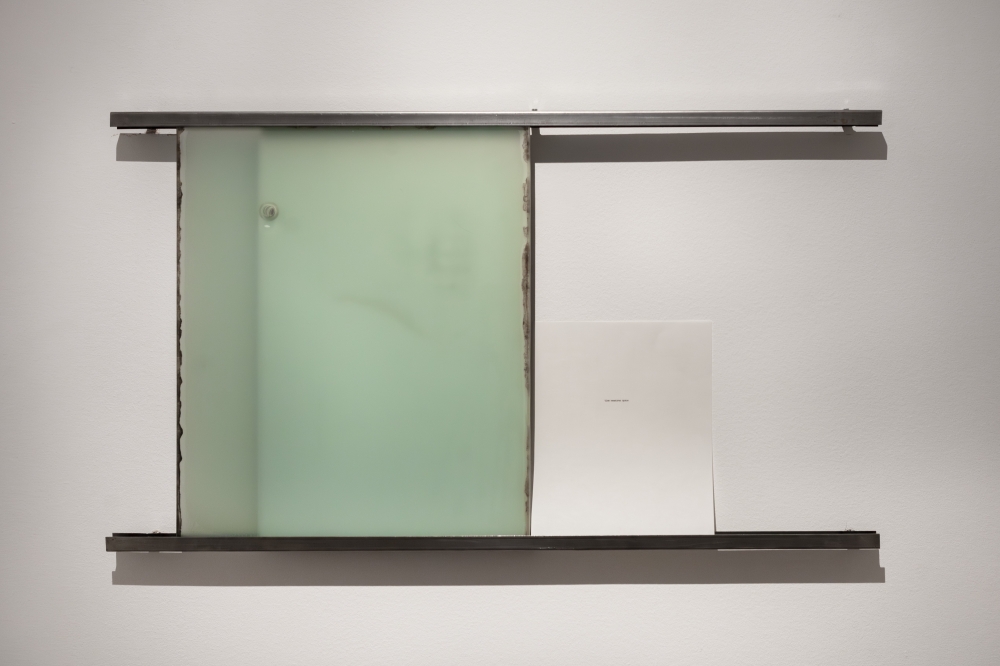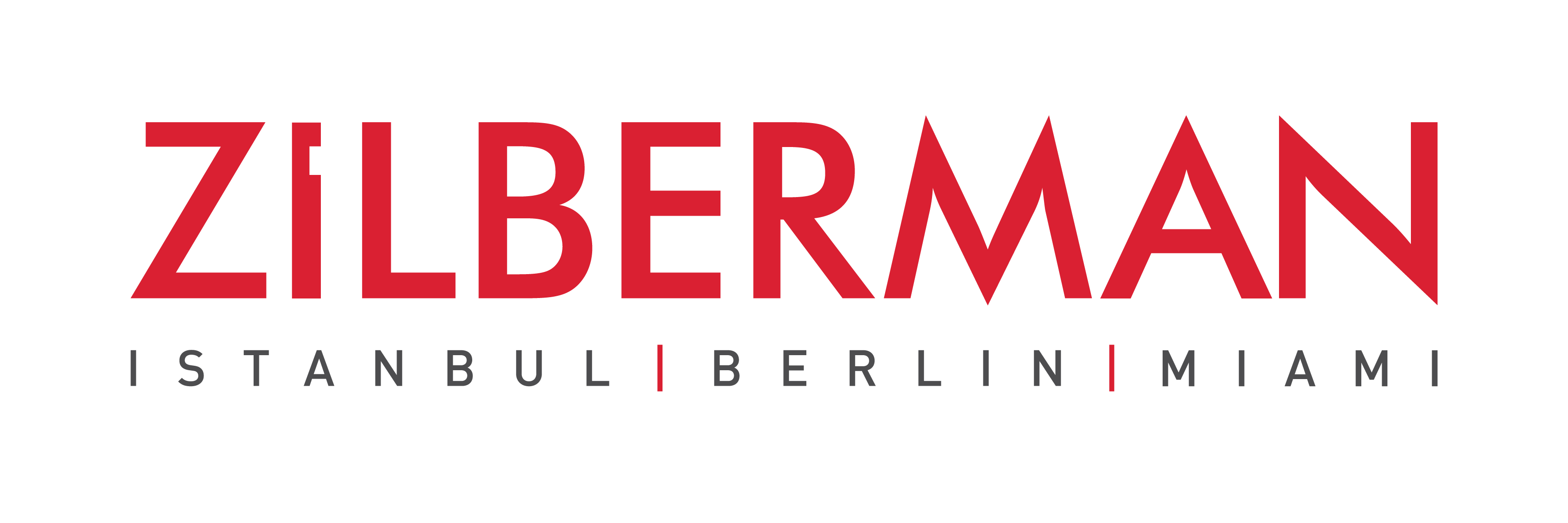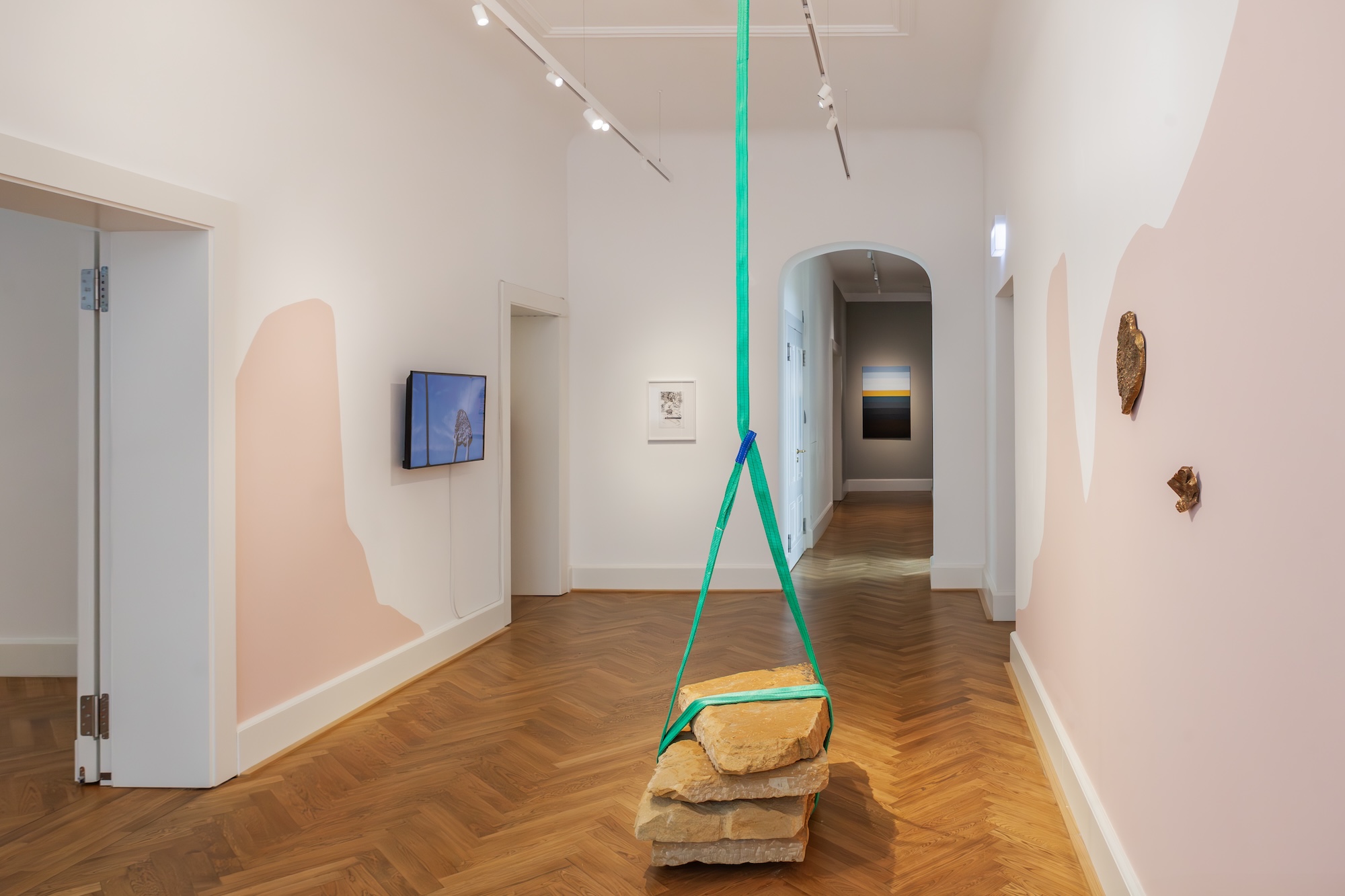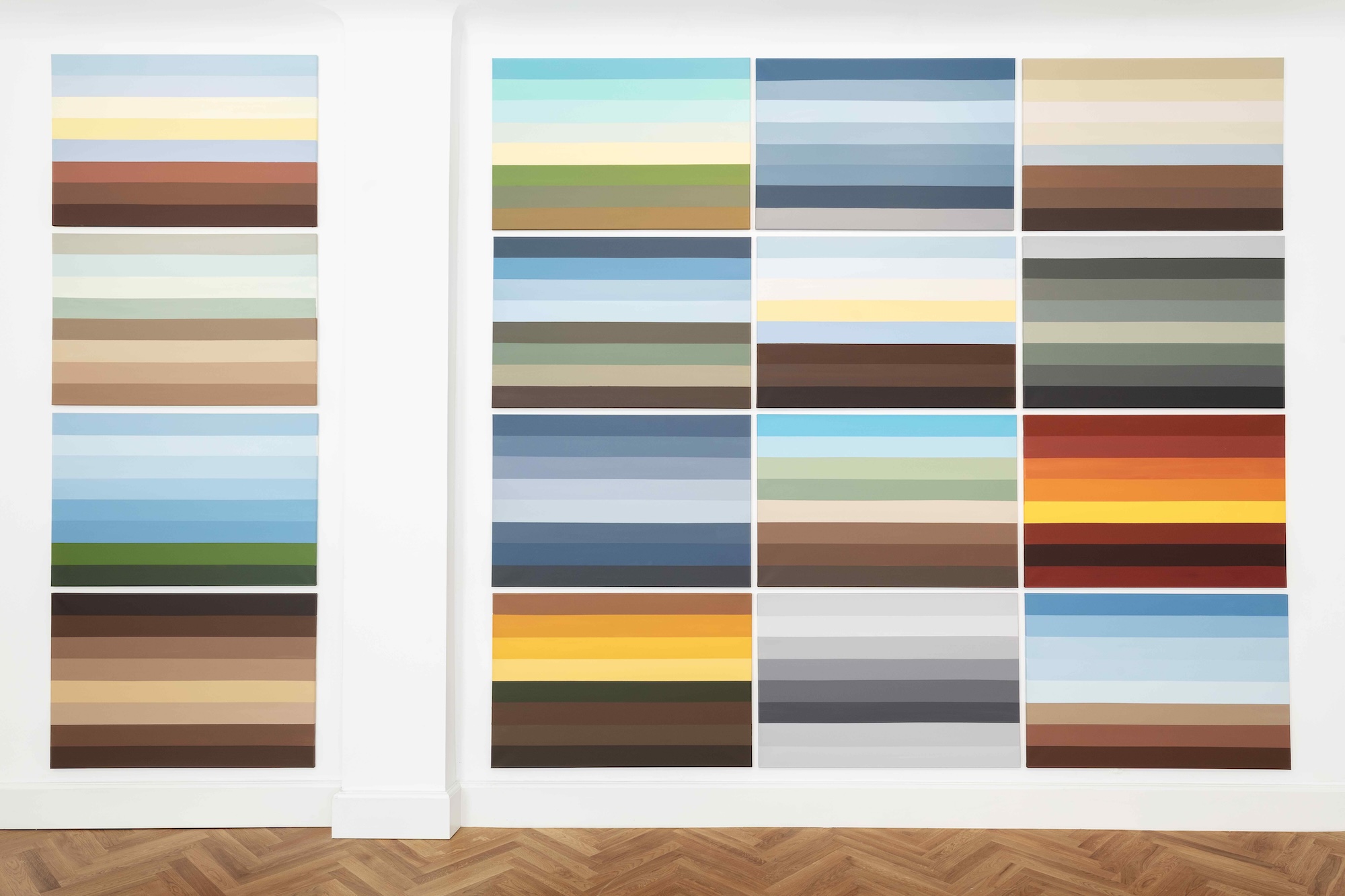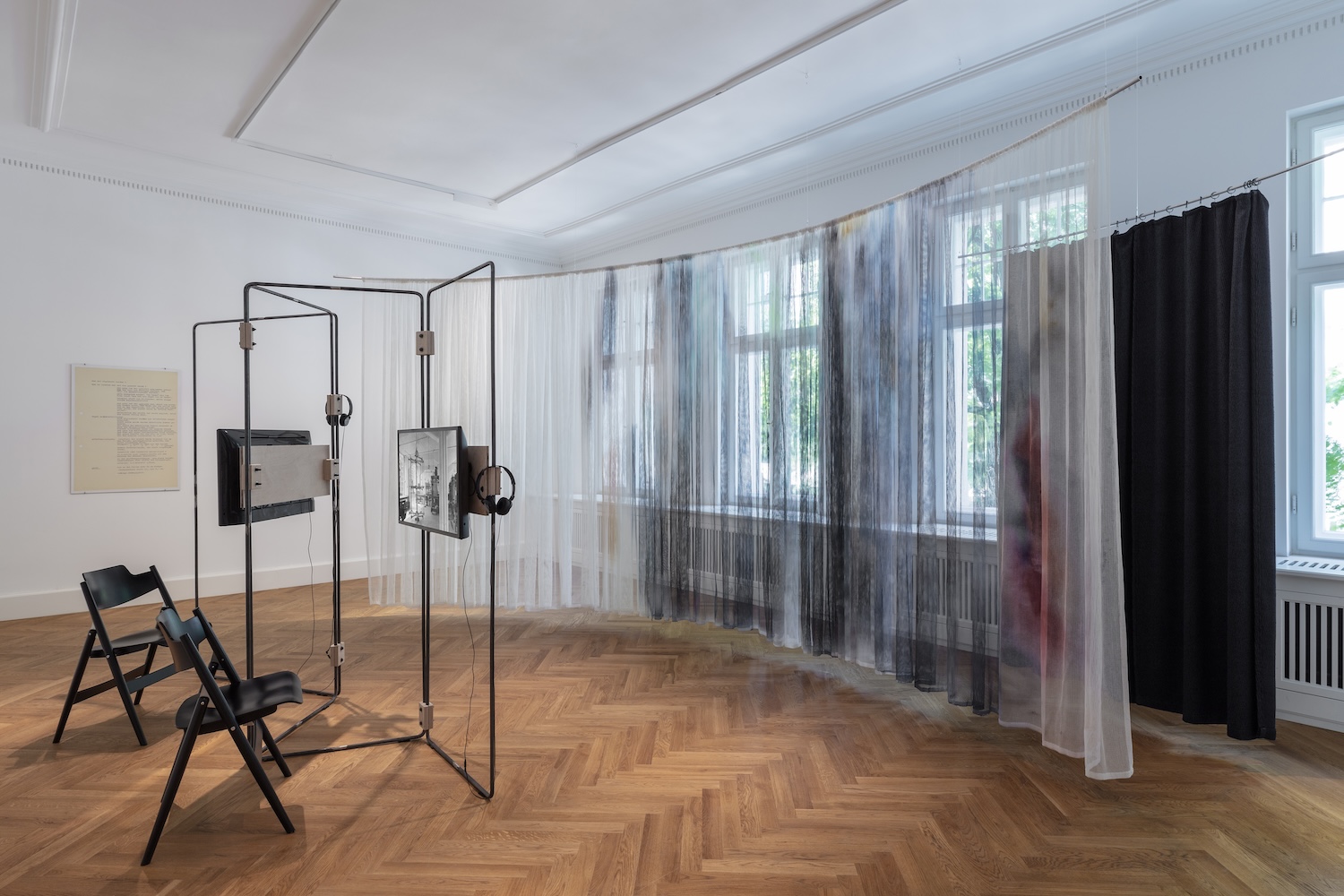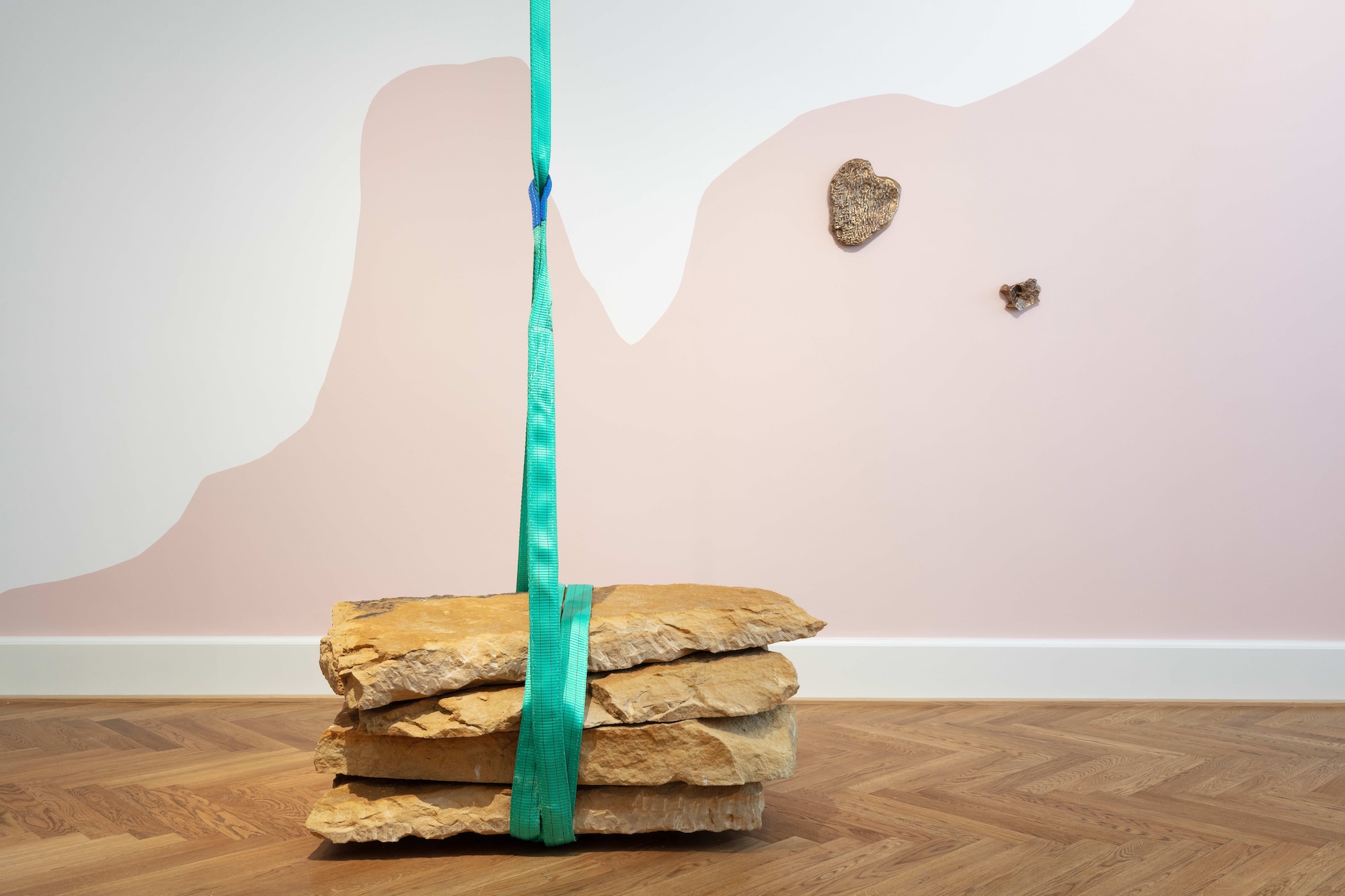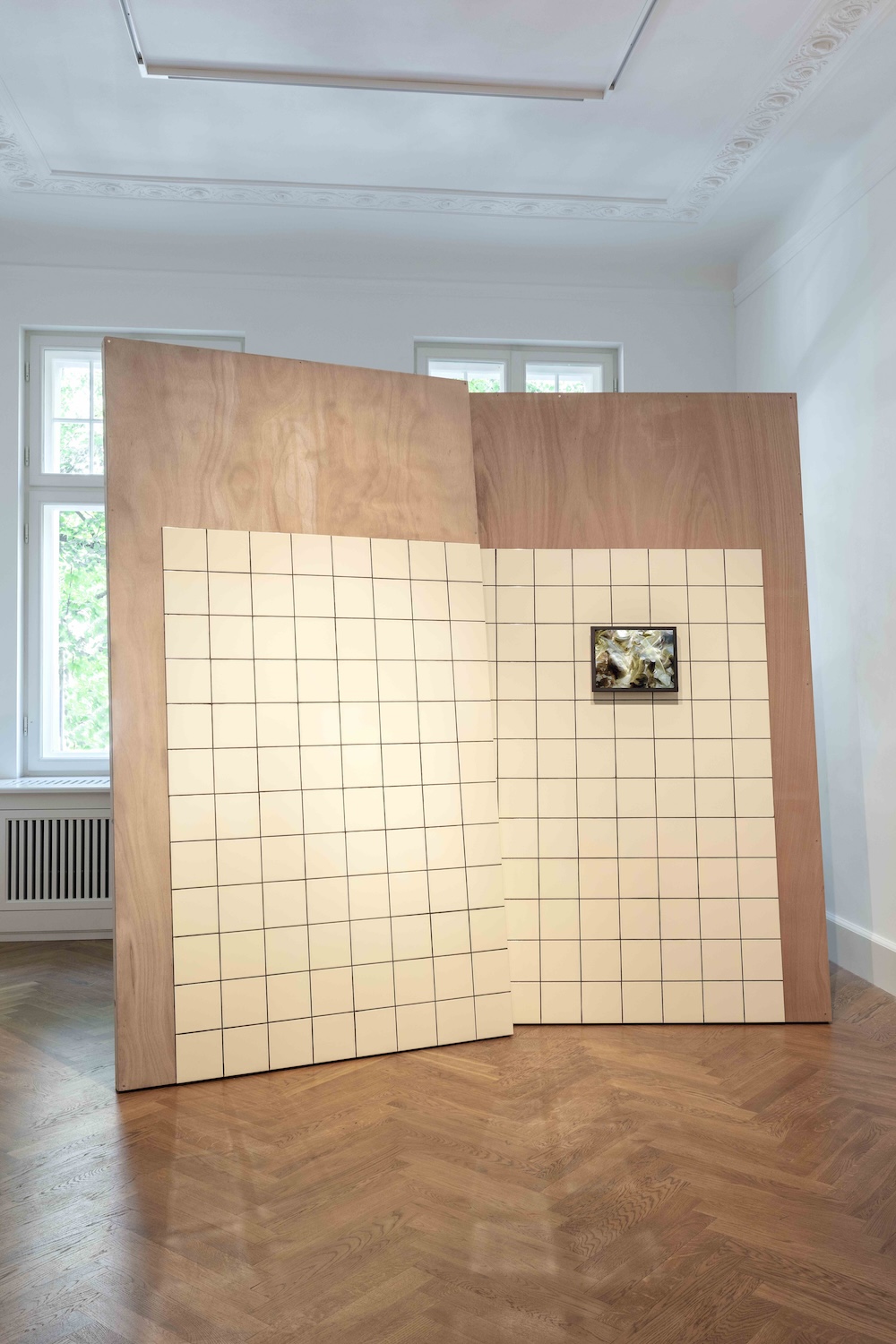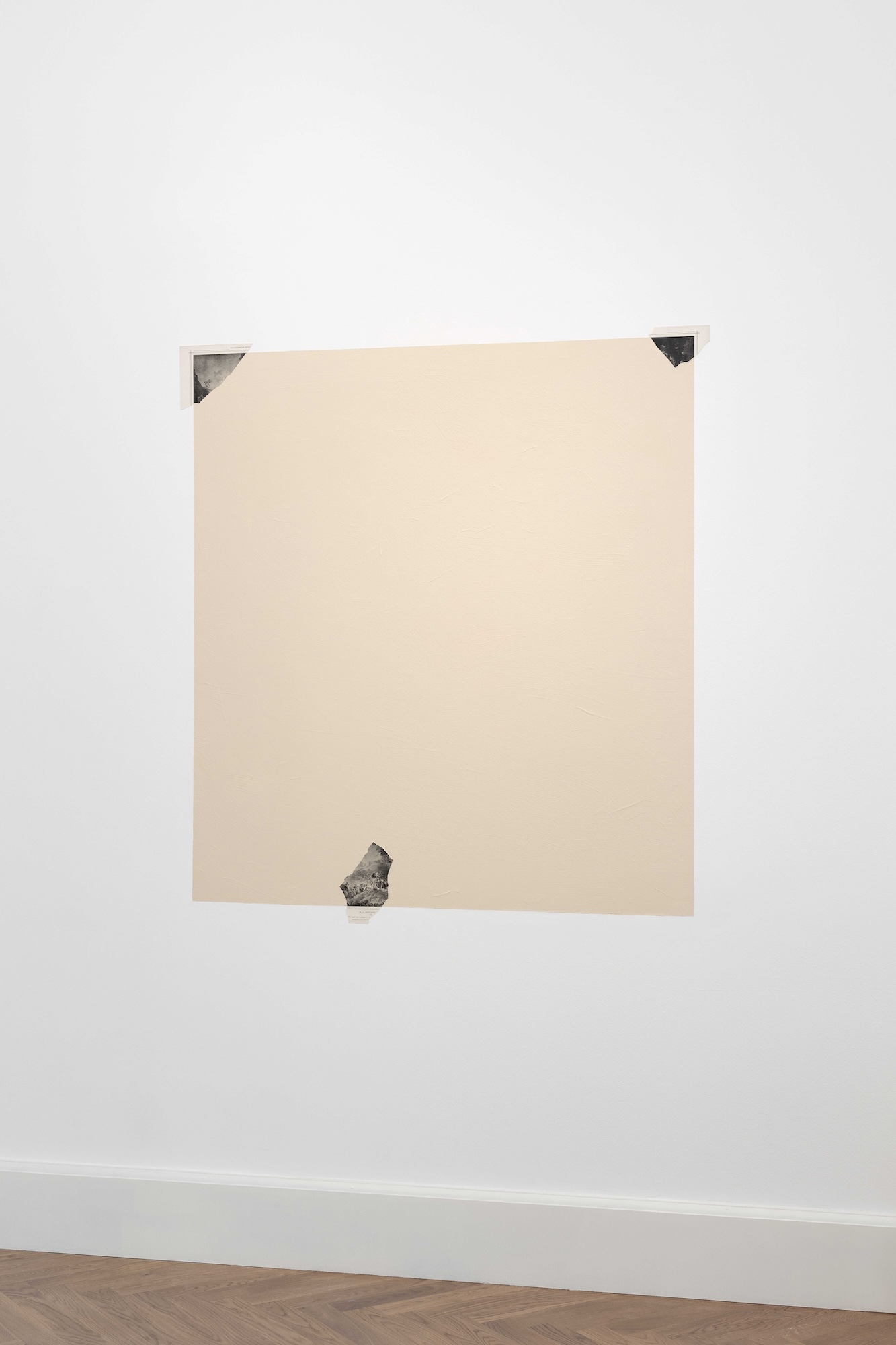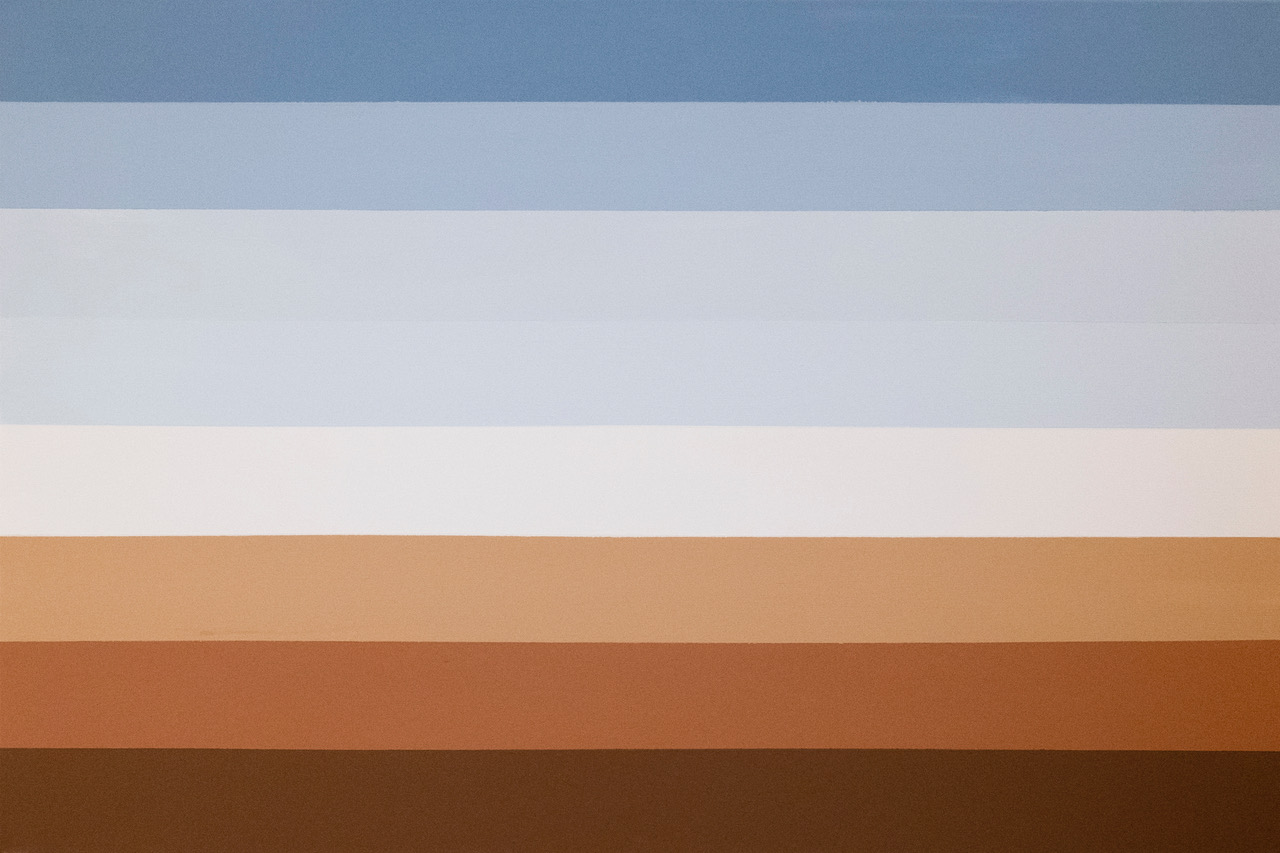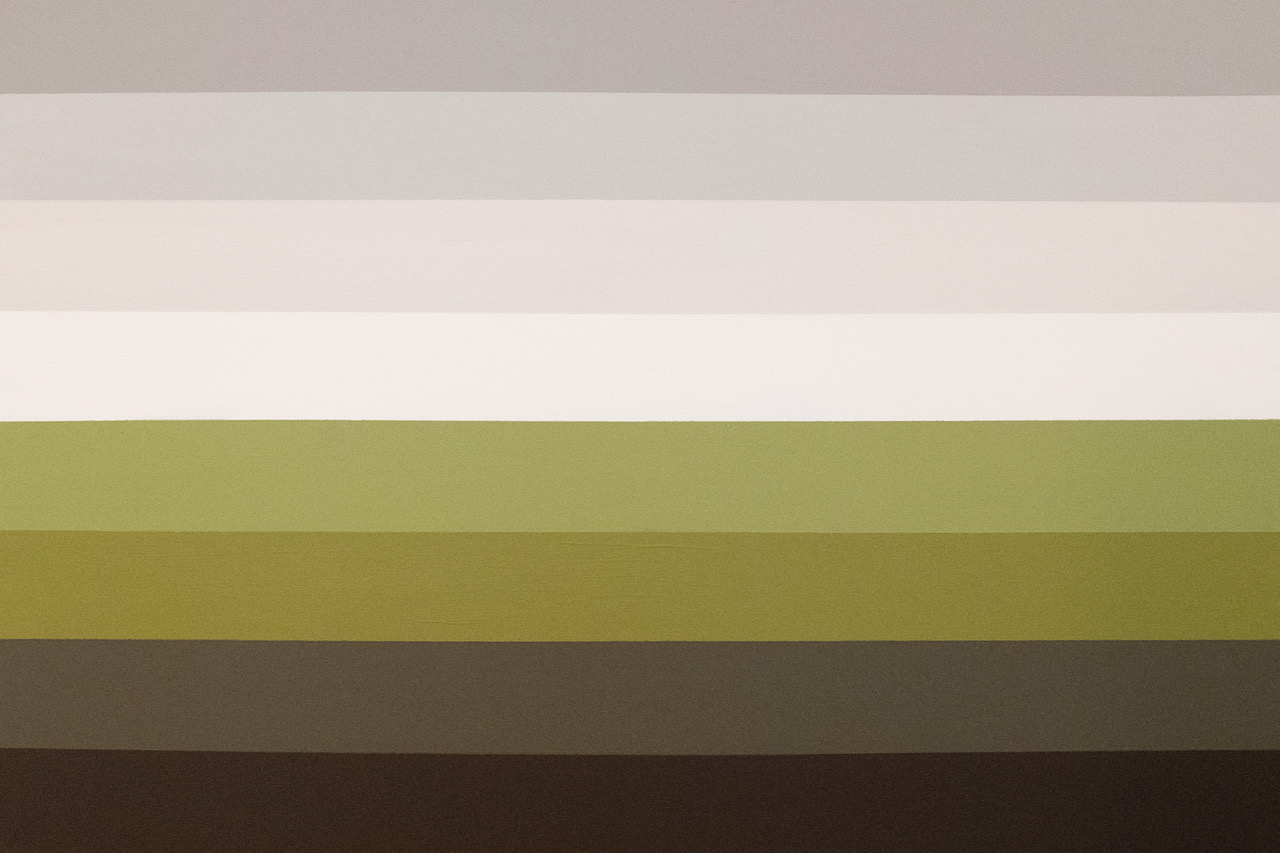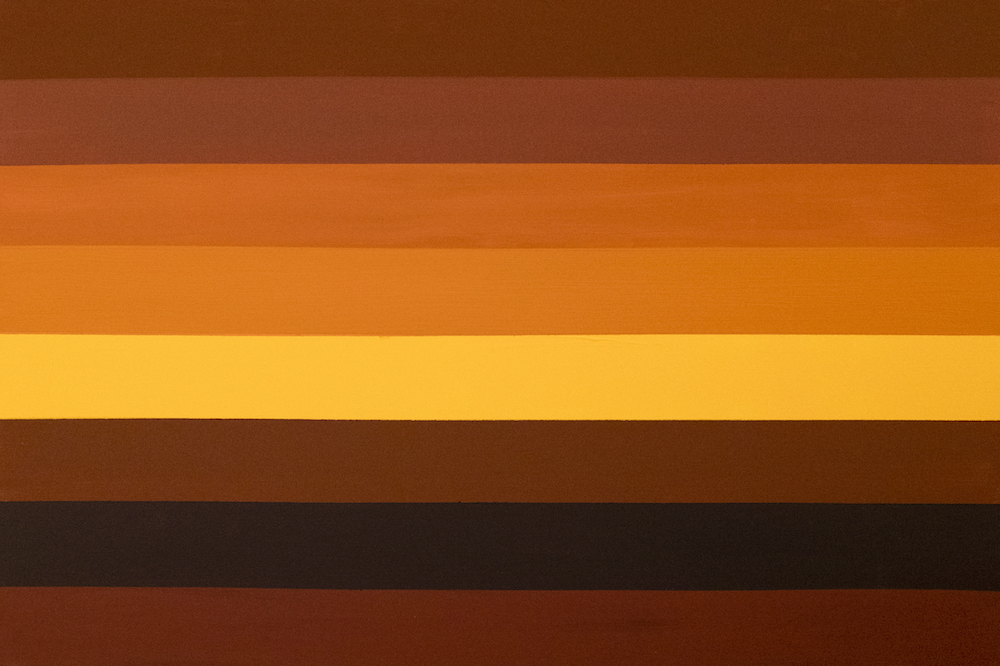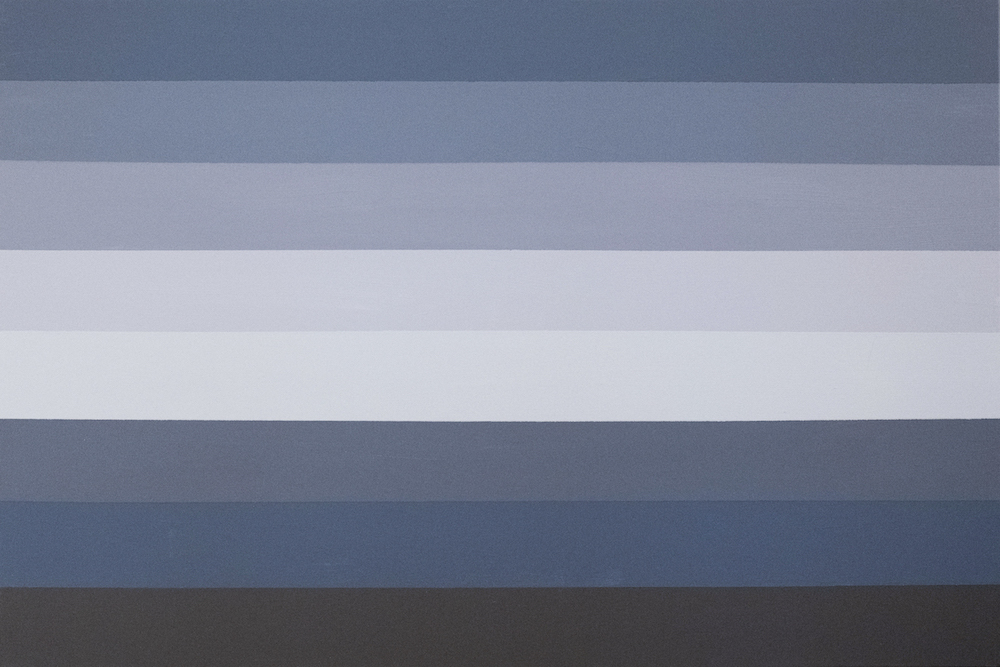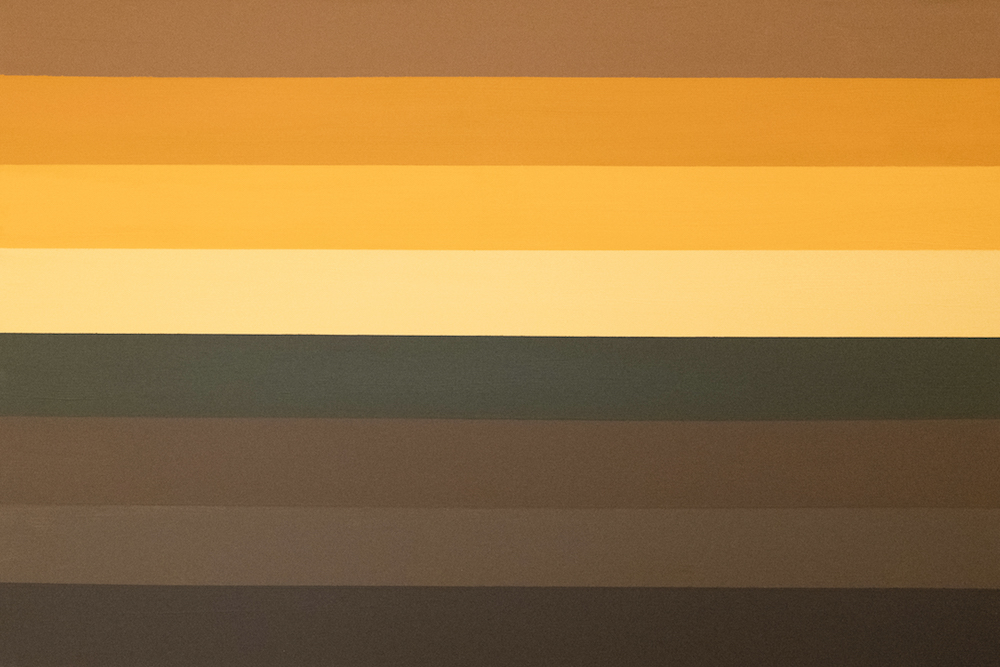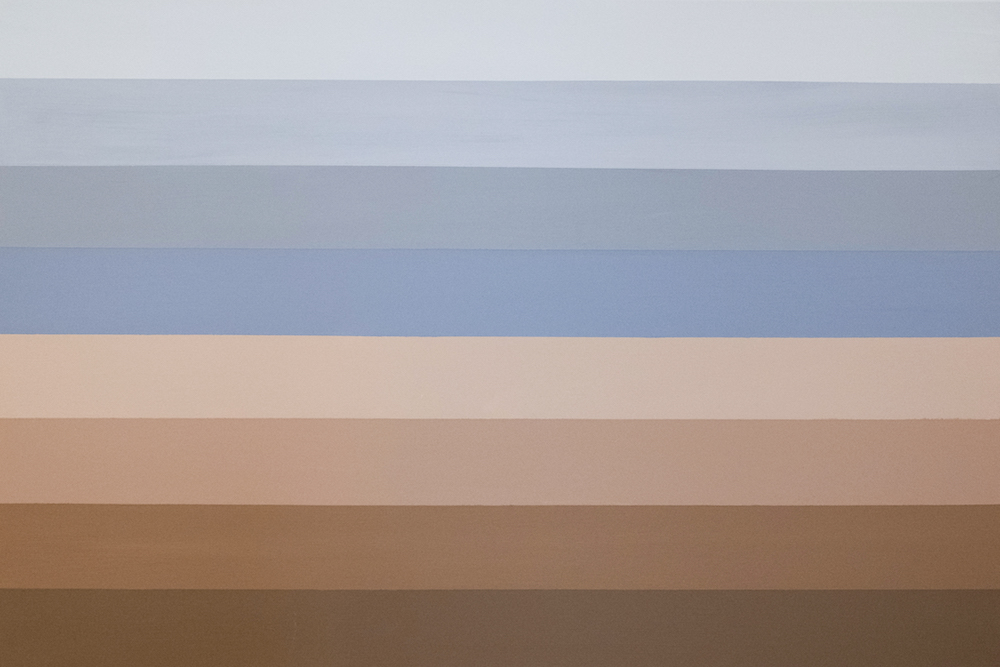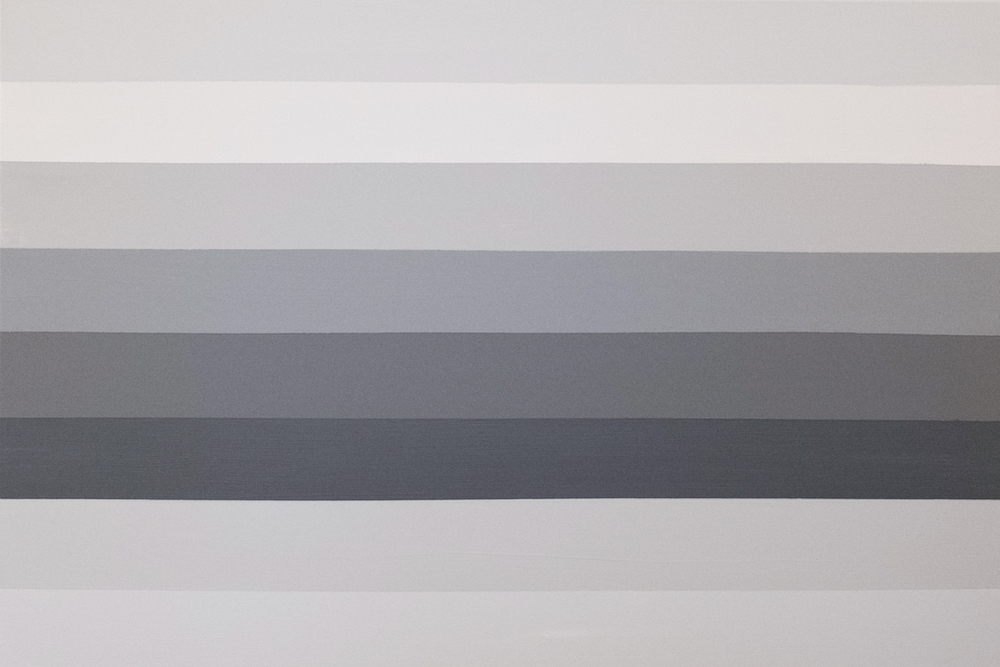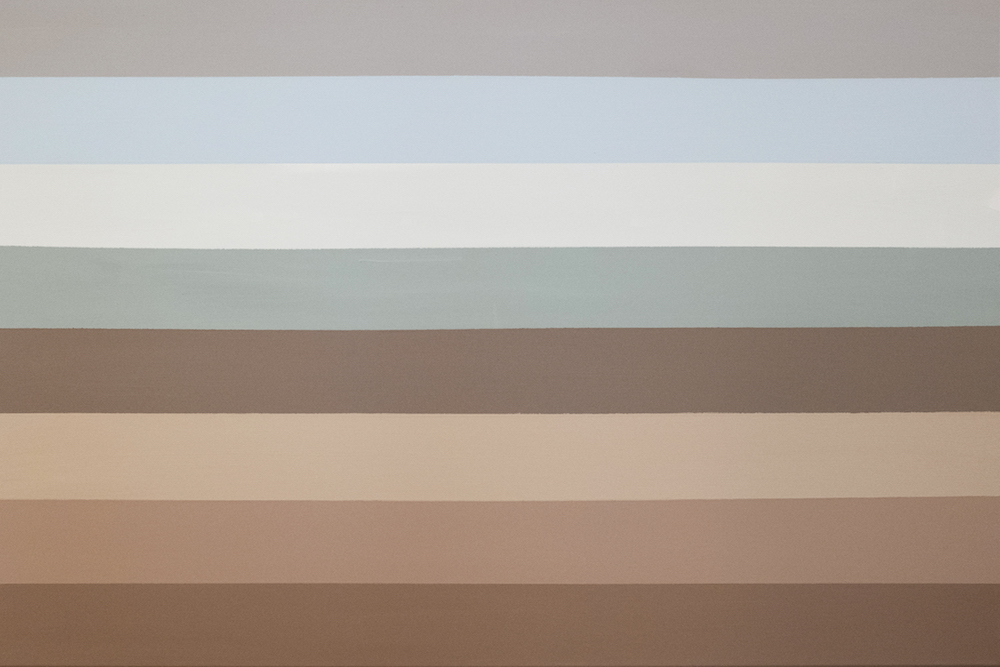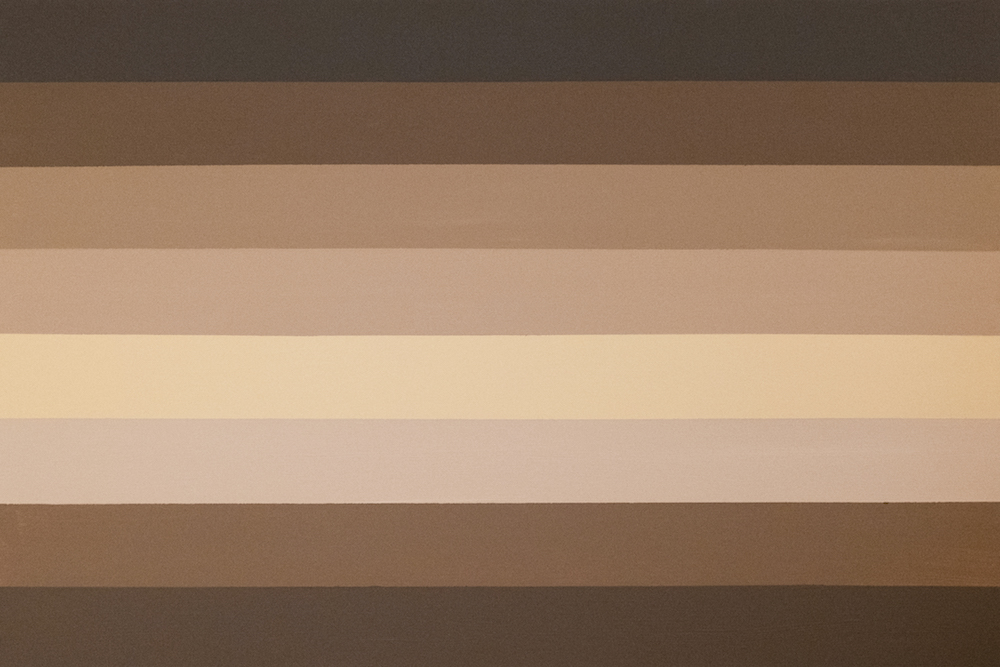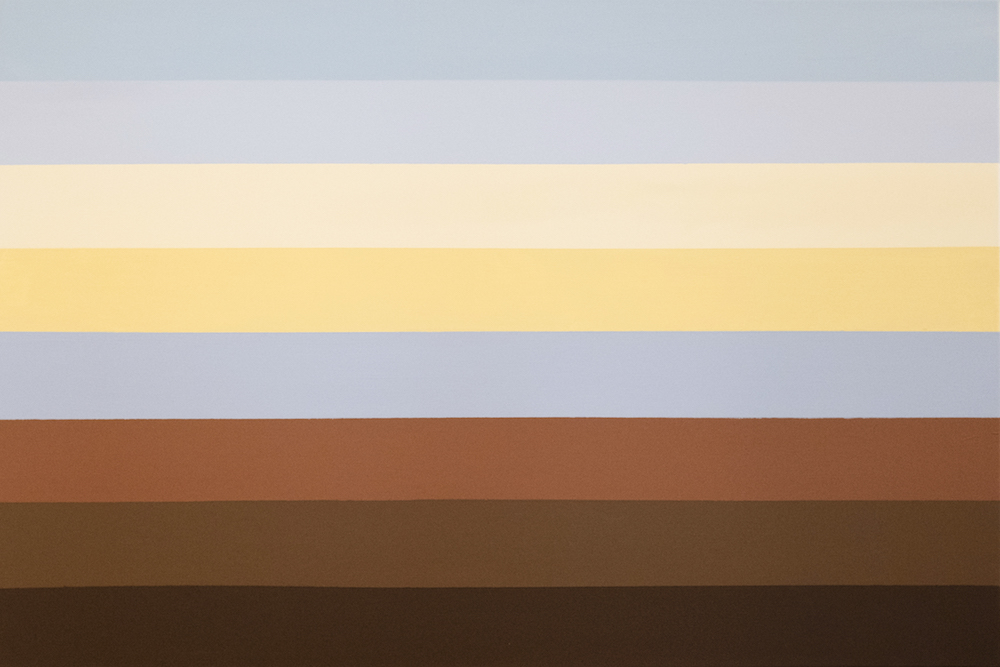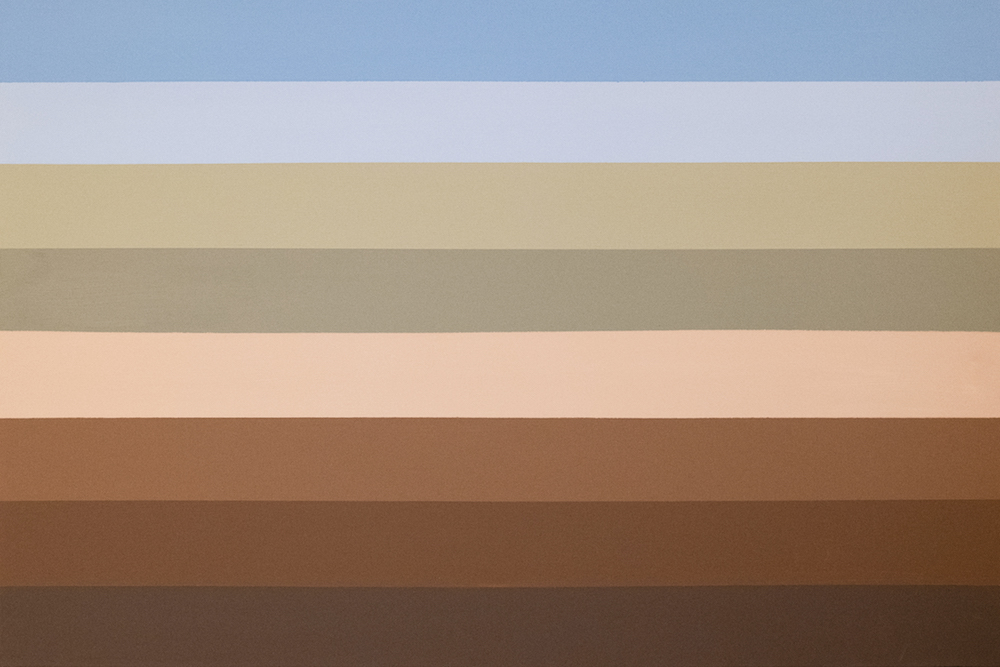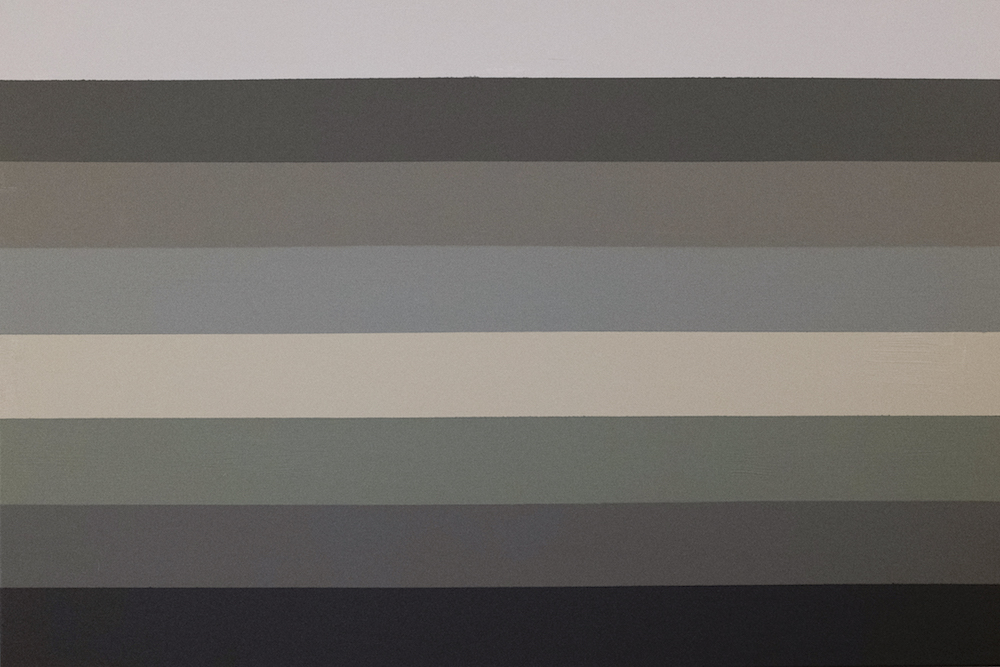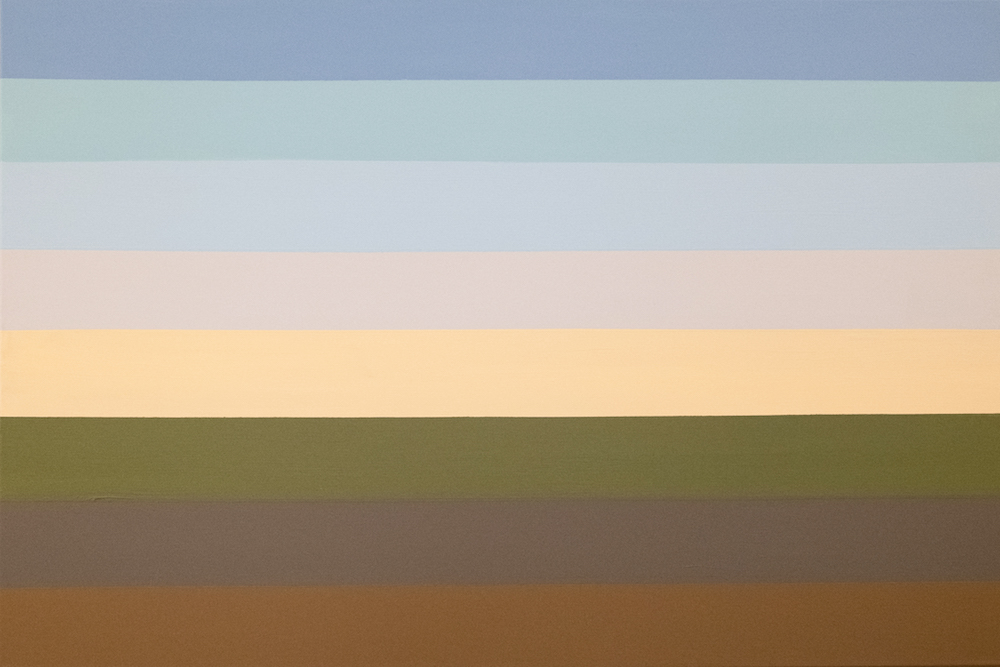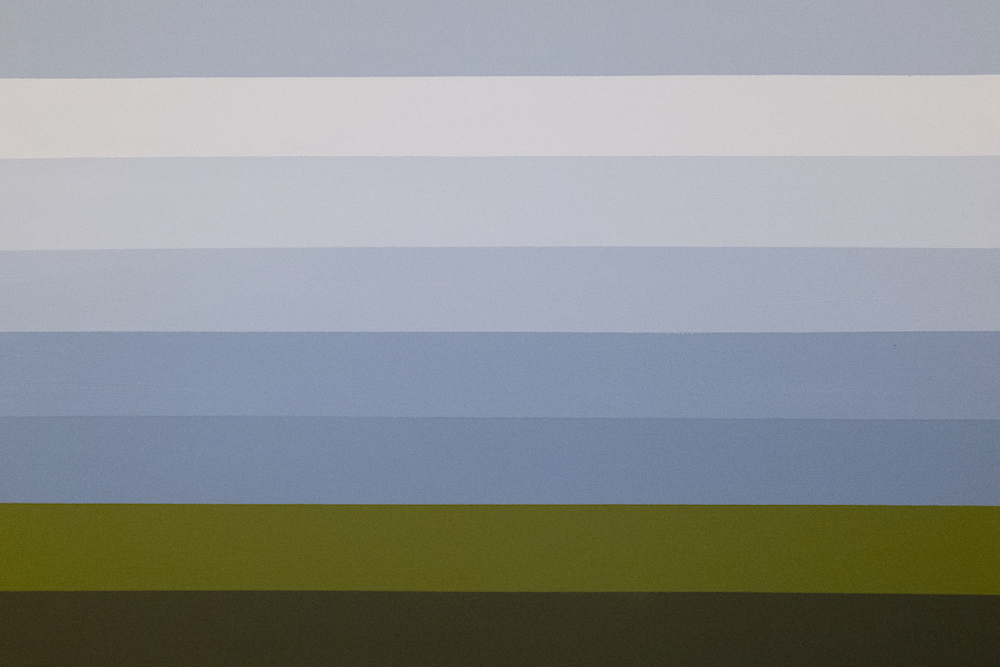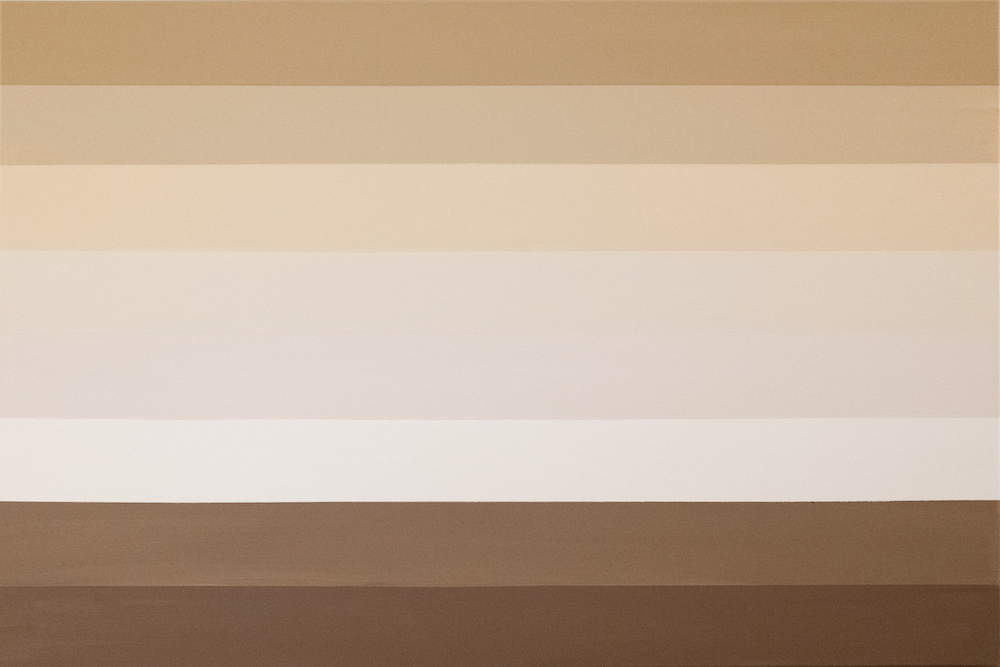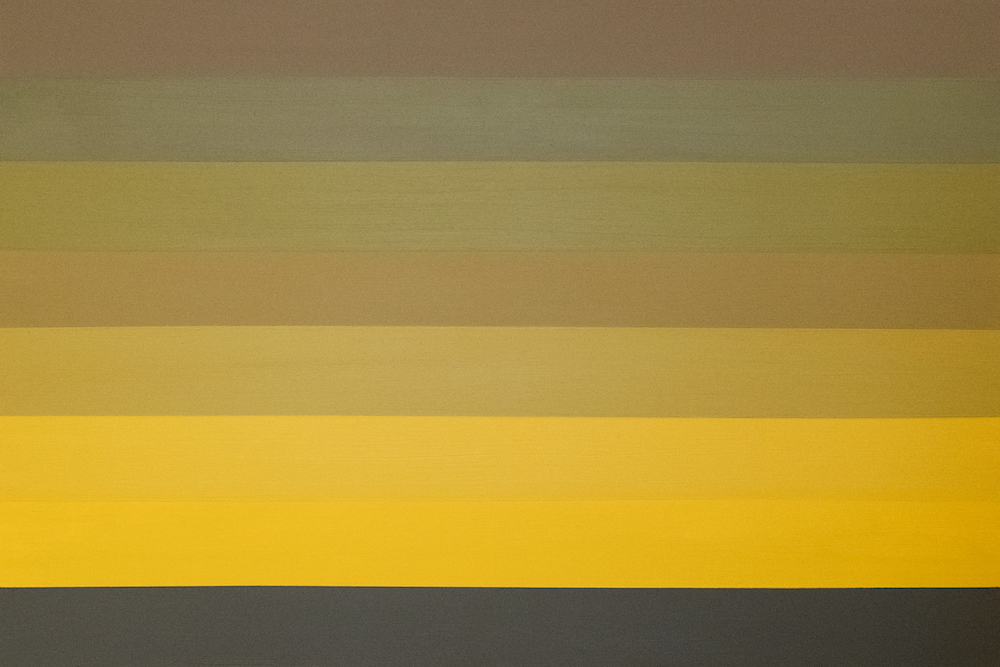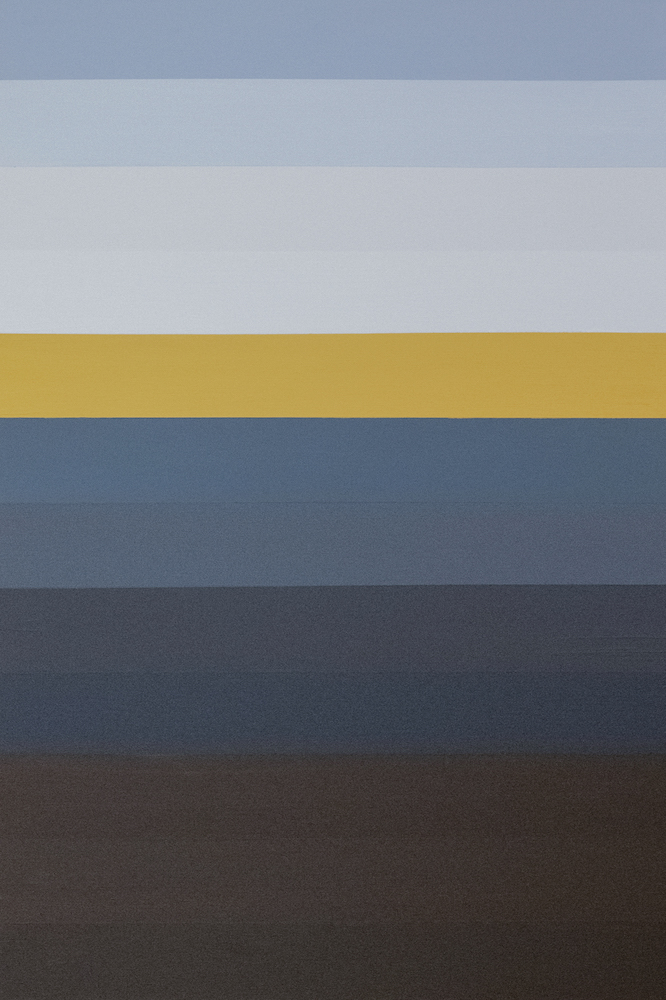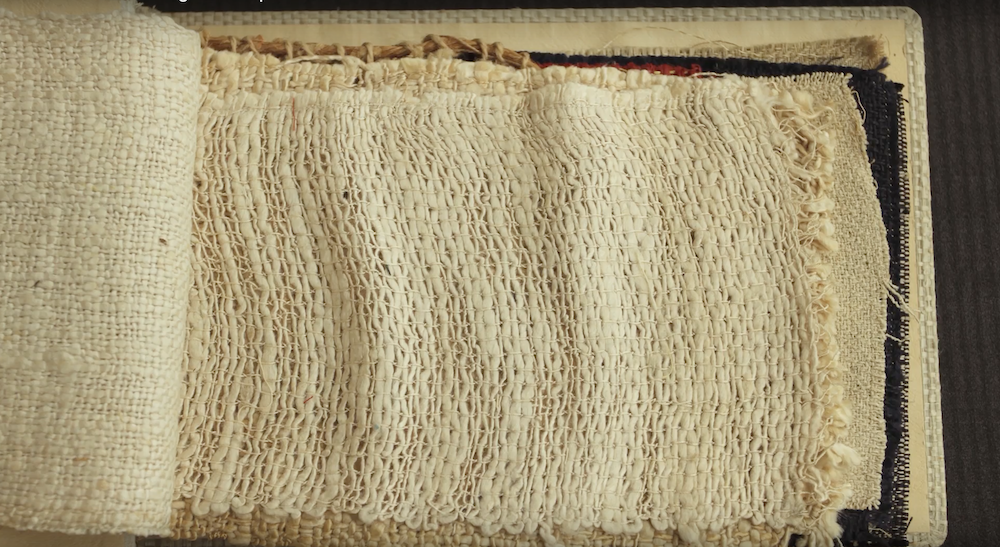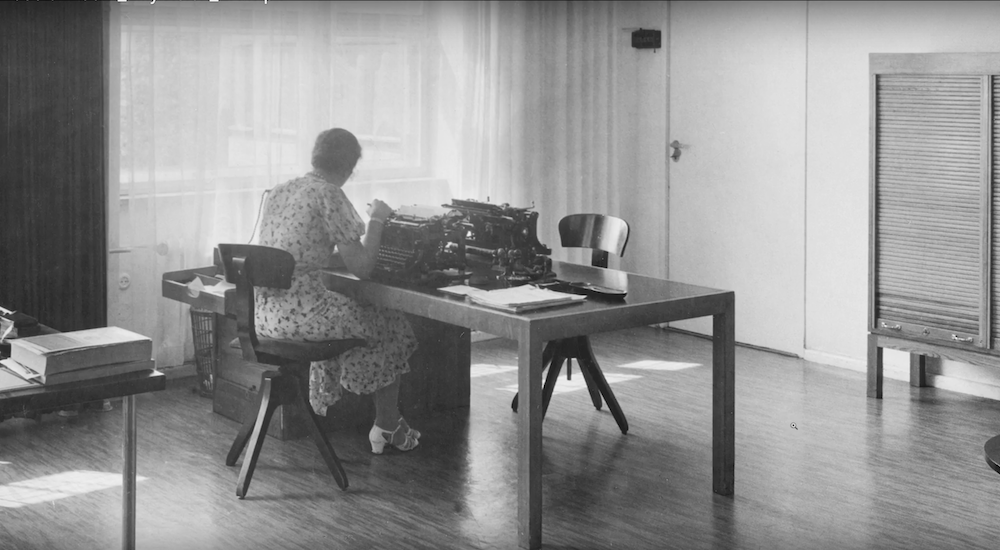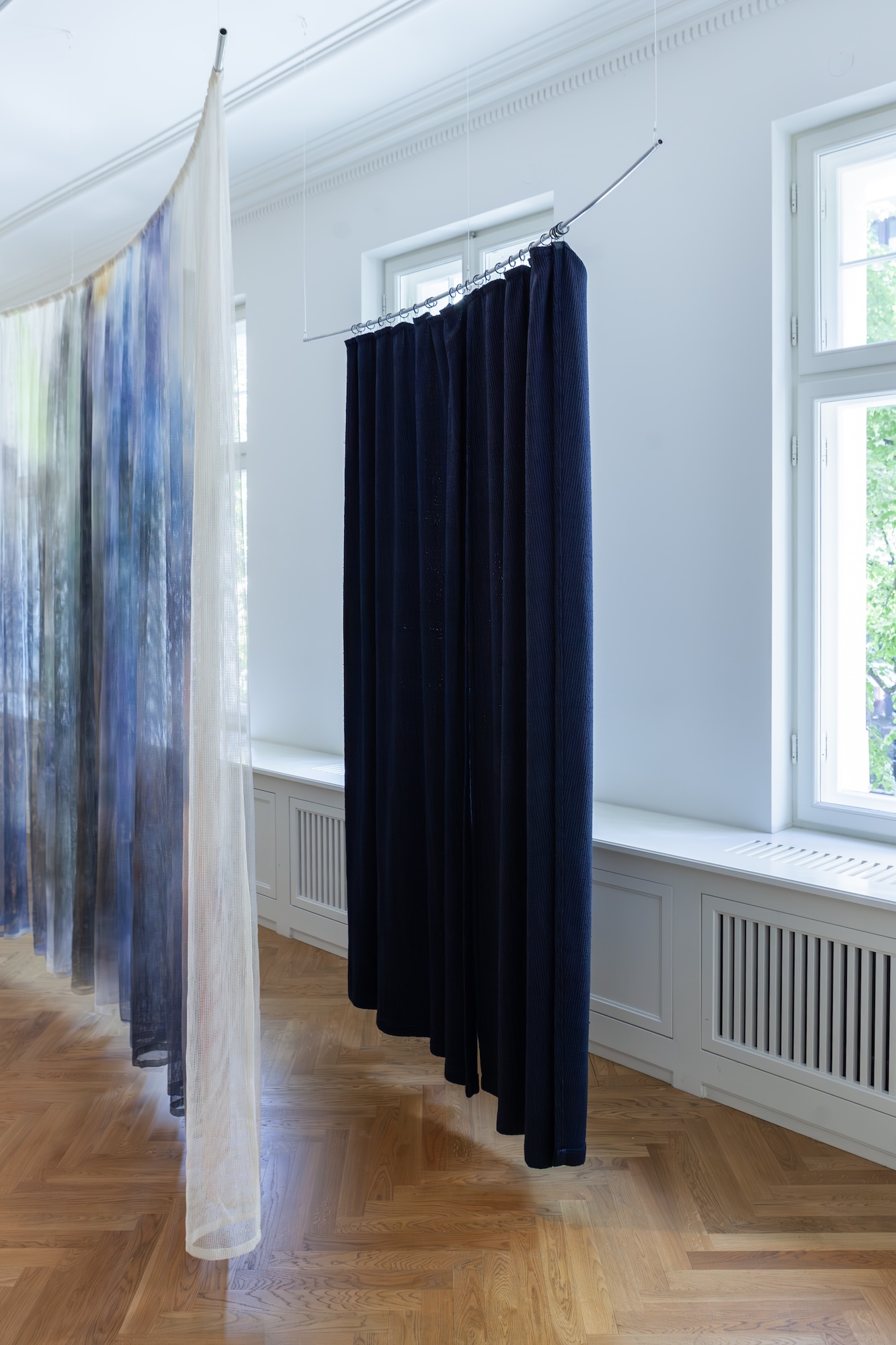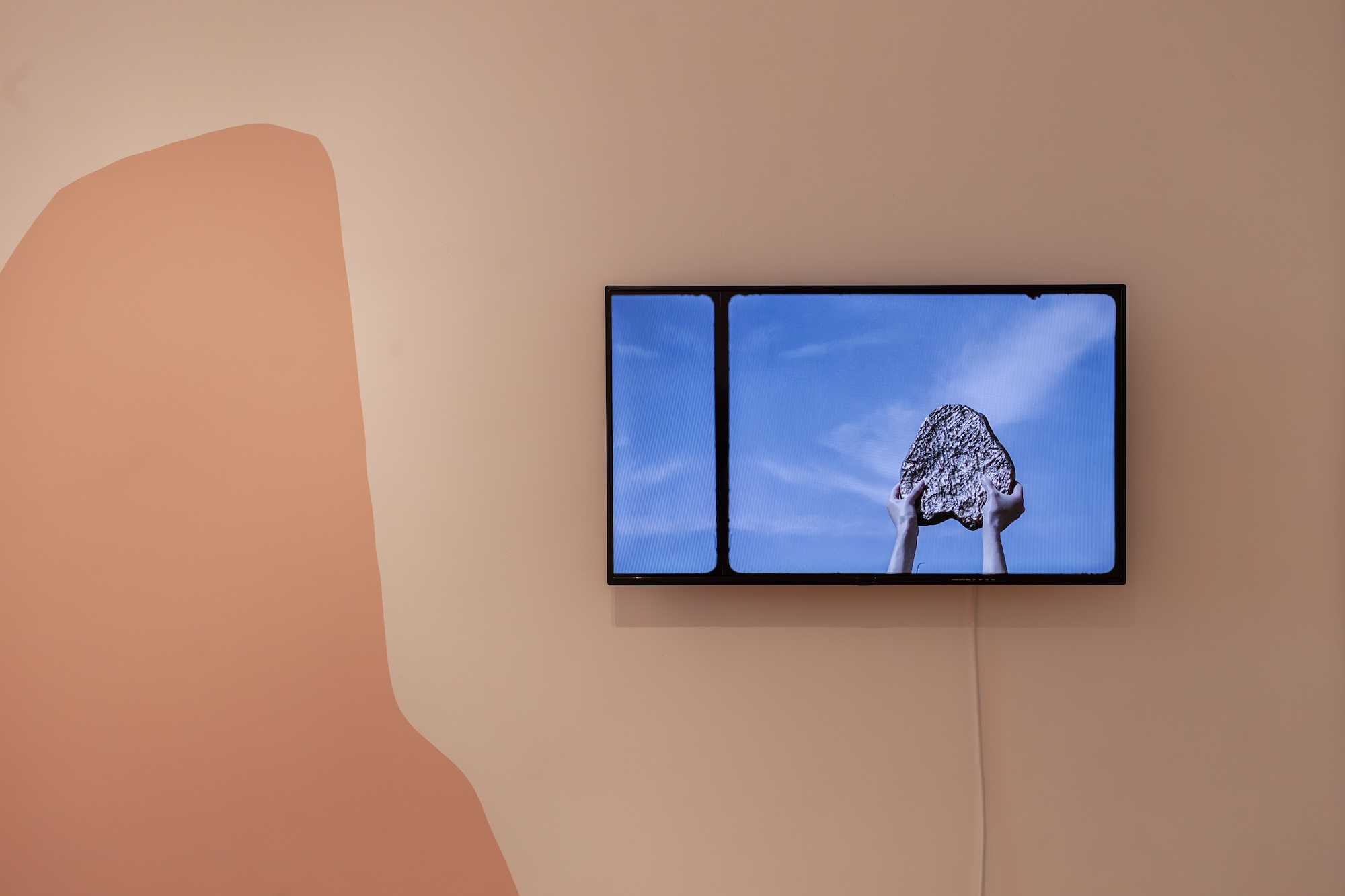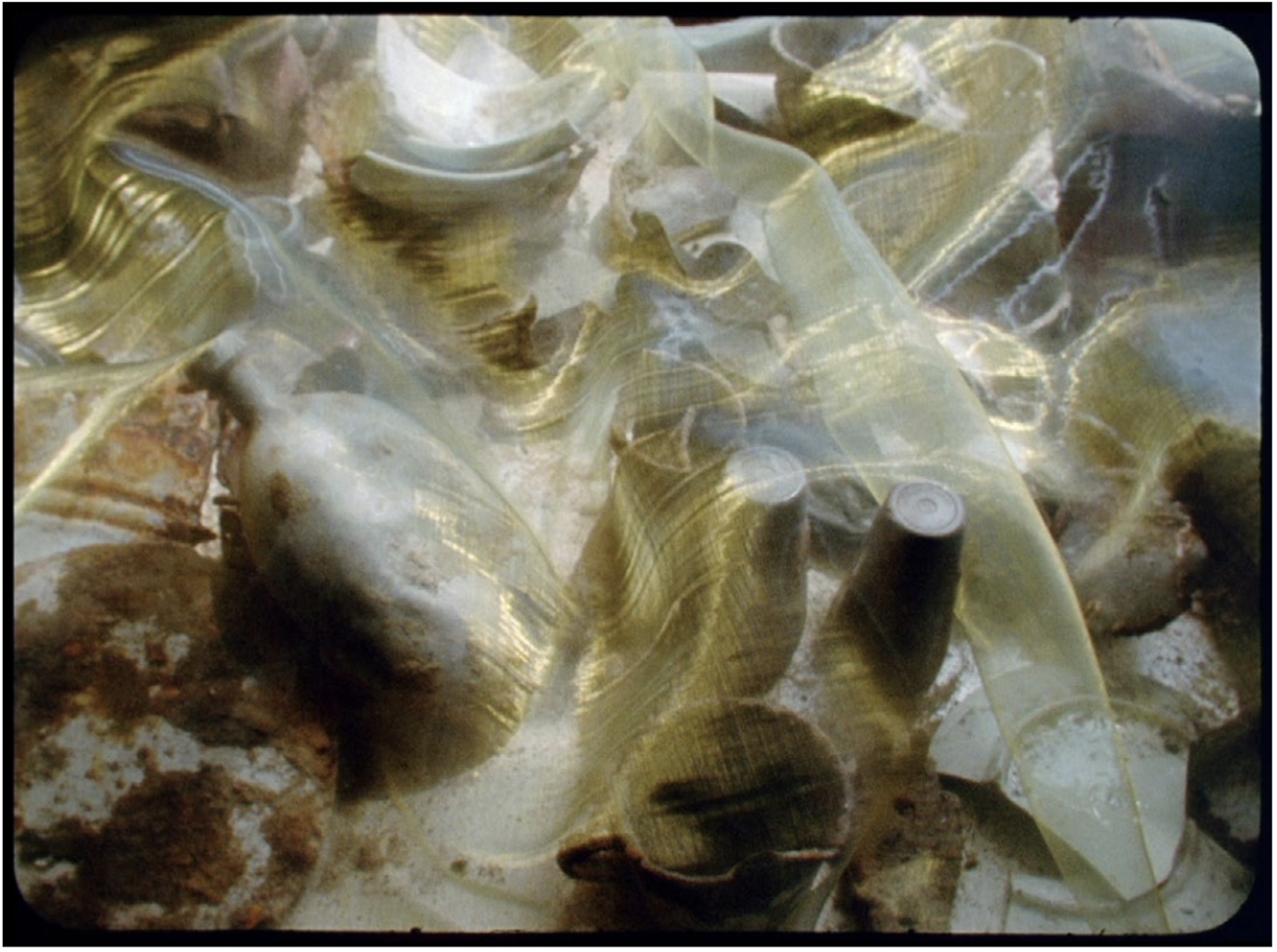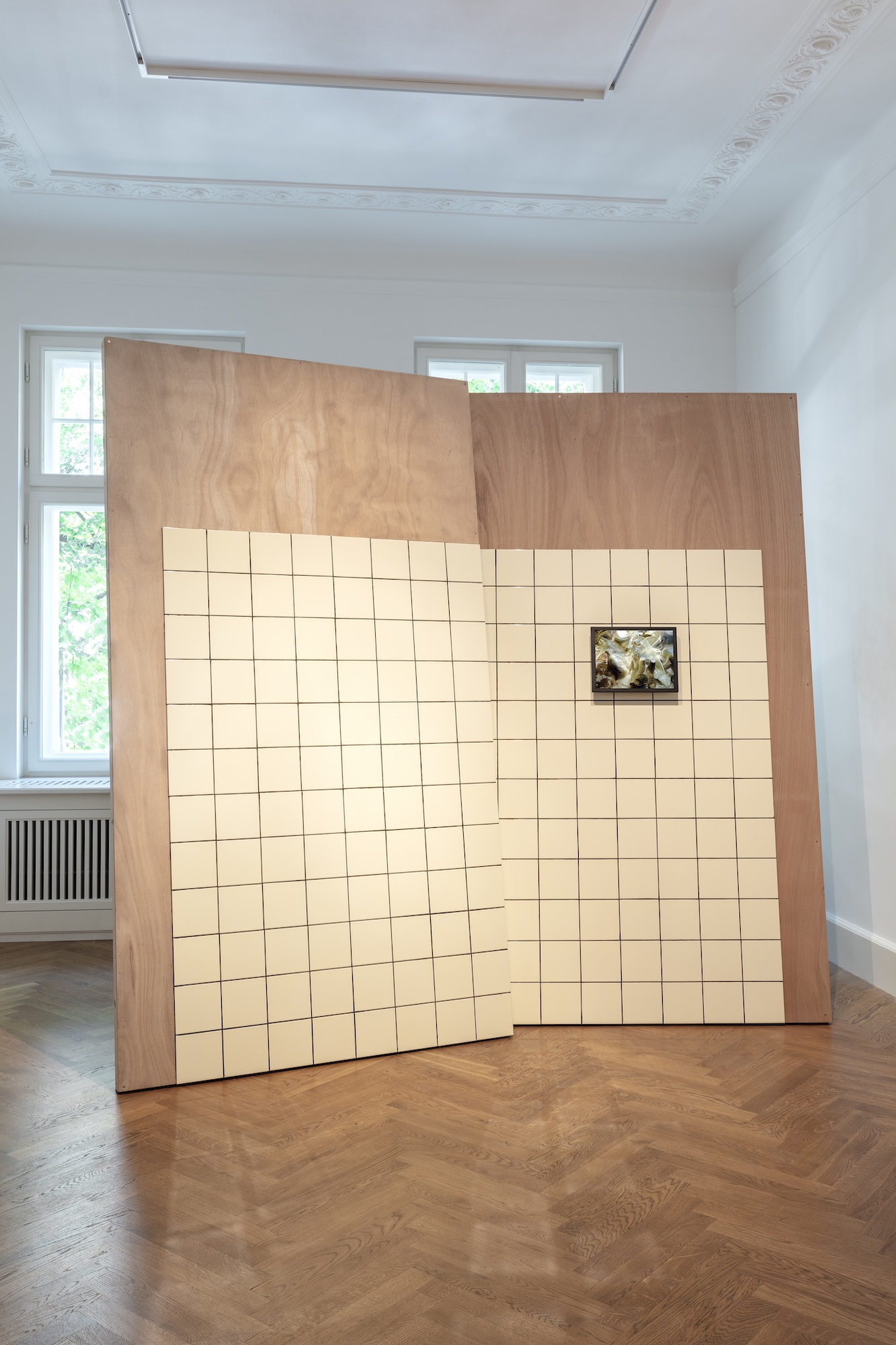BASIN BÜLTENİ - Pondering Provenance
17/05/2024 - 06/07/2024
Pondering Provenance
Marianna Christofides, Itamar Gov, Judith Raum, Simon Wachsmuth
Curated by Lotte Laub & Lusin Reinsch
Opening: May 16, 6–8.30 p.m.
May 17 – July 6, 2024
Zilberman | Berlin Schlüterstraße 45
Pondering Provenance brings together works by Marianna Christofides, Itamar Gov, Judith Raum, and Simon Wachsmuth, which contemplate what it means to have origins weighed down by history. The exhibition addresses various and partly lesser known (art-) historical narratives, focusing on moments of transition, changes of ownership and possession, and questions of provenance as it relates to the privilege of interpretation. To what extent does today’s experience shape our perception of the past and the future? In light of evolving societal sensibilities, this exhibition makes a case for an awareness of history that assumes we are now at a watershed moment and that questions prevailing opinions, value judgments, and classifications.
The historical narratives treated in Pondering Provenance are characterized by violent swings and fractures. They deal with stories of appropriation, exploitation, and obliteration and show how the meanings allocated to things change in context—for instance, how we assess the co-opting of artists by totalitarian regimes. The artists presented here remain, however, sensitive to the precarious relationships among historical experience, memory, and story-telling. At times, they make use of subversive strategies, as Itamar Gov does in his installation on Caspar David Friedrich; at others, they stage an absence of images and content, the existence of which is suggested by traces—as Simon Wachsmuth does in his work Embarkation for Cythera, Trial and Error, which refers to the Watteau painting The Embarkation for Cythera. Ostensibly harmless materials are revealed as rich substrates for a complex, politically charged narrative, as in Judith Raum’s installation Textile Territories on the Bauhaus lattice tulle. Marianna Christofides’ research on a frieze group formerly adorning the avant-corps of the Berlin Akademie der Künste leads her into petrology and to an historically loaded stone quarry in Germany’s Elbsandsteingebirge. In another work, she explores the voice’s sonority, oscillating between sound and meaning and giving expression to potentiality. In all these works, a latent content is summoned into life in the present moment. Being rendered visible in the present, historical experience is also opened towards a possible future.
With the dictum “esse est percipi” (being is being perceived), Samuel Beckett cited the philosopher and theologian George Berkeley. Even when we try to eradicate our own perception of the external world, our perception of the self ultimately remains, an internal reverberation that constantly accompanies us. It may appear surprising at first glance that, of all things, a painting by Caspar David Friedrich: Zwei Männer in Betrachtung des Mondes (Two Men Contemplating the Moon) should have served Beckett as inspiration for his play Waiting for Godot. The play and the painting, however, have in common their relational way of viewing reality and the problem of perception and self-perception. In the exhibition Pondering Provenance, we track the damage done to art works—how art works are understood and evaluated differently in different times, depending on the historical circumstances. What this shows is that the object of our gaze is as it is perceived. Thus both the subject and the form of an art work, as well as its perception, are informed by the criteria of evaluation prevailing in any given era both in society at large and in the individual artist or viewer.
Itamar Gov’s Caspar David Friedrich, Degenerated #13: Zwei Männer in Betrachtung des Mondes (1819–20) is one of a series of 33 paintings entitled Caspar David Friedrich, Degenerated, each referring to one of Friedrich’s most famous paintings. Caspar David Friedrich embodies like no other painter the spirit of German Romanticism in the 19th century, and his iconic paintings are among the most celebrated art works on exhibit in museums in Germany and around the world. At the same time, he was also one of the artists most admired and celebrated by the Nazi regime—for which his works represented the essence of a “masculine Nordic” spirit, a central component of the Nazi ideology and worldview.
Almost 85 years after the opening of the notorious Nazi exhibition of “Degenerate Art” (Entartete Kunst) in Munich—which presented art works deemed “degenerate” because they did not fit into the Nazis’ worldview—Itamar Gov extracts samples of the rich and diverse colours of Friedrich’s paintings, with their contemplative figures amidst ruins and powerful landscapes, to lay them in identically broad horizontal stripes. As Gov tells us, he created this series in a gesture of visual revenge, using a language of abstraction to realize the Nazi leadership’s worst aesthetic nightmares. Gov’s paintings are shown for the first time in the year of Caspar David Friedrich’s 250th birthday. The color for the wall on which these works are exhibited was chosen to correspond with the color of the wall in the room of the Museum in which the original paintings are exhibited. He thus makes reference to the works’ provenance, status and museum history.
Marianna Christofides presents two projects dealing with the provenance of materials. Her work In die Mulde meiner Stummheit leg ein Wort (In the hollow of my muteness lay a word), commissioned by the Akademie der Künste Berlin, refers in its title to a line from a poem by Ingeborg Bachmann. The work reflects on our current socio-political and ecological challenges and exposes them as echoes from the long continuum of dispossession and violence. The motif of fragility is here interwoven with the poetics of the material, intimating a quiet form of resistance to the injustices imposed on it. Urania, a statue of sandstone, both muse and witness, dates from the 18th century, when it adorned the façade of the former Akademie der Künste building as part of a frieze group. Today the statue, bearing the scars of history, stands hidden behind thick vegetation in Berlin’s Kleist-Park. In a gesture of renewing its presence, Christofides makes molds of the statue’s wounds, its broken edges—then casts them in bronze and re-arranges the orphaned body parts in front of a silhouette of the frieze group to which they once belonged. Yet the provenance of the material for this Urania incites the artist to conduct further research. In the quarries of the Elbsandsteingebirge, she comes across long hushed-up stories of forced labor during the Second World War.
Christofides’ second installation, Repotting Flowers, turns the (human) voice into a primary material. At its heart is the powerful 16-mm footage shot in and around the former Nazi concentration camp for women at Ravensbrück. In it, ca. 130 000 women were imprisoned and tortured. This was also the camp that served, within the Nazi system of concentration camps, as the principal recruitment center for training female guards. Only a fraction of these guards were brought to justice after the Second World War. The artist’s film commences with a glimmering gold fabric, which slowly reveals the fragments of relicts unearthed from daily life. While we hear the voice of vocalist Almut Kühne, her figure remains invisible at first, except for the expansion and contraction of her upper body, seen from the back. These shots are juxtaposed with black-and-white photographs that might have been taken from some family album. They appear to record anodyne events. When we look more closely, however, an ambivalence appears, which causes us to question the narratives embedded in these apparently harmless moments. On the back side of one photograph, we can read the name of the firm Agfa, which belonged between 1925 and 1945 to the IG-Farben-Kartell, responsible for producing “Zyklon B.” Agfa was connected to Ravensbrück through the film manufacturing plant Wolfen in Bitterfeld-Wolfen. An external concentration camp facility was built there, which until 1944 was administered by Ravensbrück. Thereafter, the camp was incorporated into the military-industrial complex of Auschwitz-Birkenau. By shooting on ORiginal WOlfen (ORWO) film, Marianna Christofides embeds the film material itself into this history of violence. The material underpinnings of the medium become part of a porous narrative of celluloid production, forced labor, and mass extermination. A statement by one of the camp’s former guards, who refers to her duties during the so-called “Crematorium Commando” as “repotting flowers,” brings home the banality of evil and the ability for people to normalize their experience in systems of oppression. Christofides embeds her film in an installation that renders voice and place tangible and topples our rigid image of speech as a supposedly unambiguous bearer of meaning.
Judith Raum, for her installation Textile Territories, conducted research in archives worldwide, in order to restore an echo of the context surrounding production of the last fabric collection of the Bauhaus Weaving Workshop during the transition from the Weimar Republic to National Socialism in 1933. Her work is centered on the so-called Bauhaus lattice tulle. This was a transparent material used for window drapery that modulated the incidence of light. The Bauhaus produced this fabric until as late as 1933 in several variations. The last surviving samples were conserved in the archive of the MoMA in New York, but no research was conducted on them. Sheer curtains of this kind were produced industrially, and around the year 1920 there were factories producing lattice tulle all over Germany. The fabric, however, would always be decorated with a floral or geometric pattern. The Bauhaus, in contrast, declared that the tulle’s basic underlying form, the lattice structure, constituted a finished product.
In the video works presented alongside the other elements, Judith Raum unfolds two narratives, which deal with the veil-like character of lattice tulle and the way it thus manipulated the gaze, toward the inside and the outside, in interior decoration of the 1930s. She also gives voice to the two leading designers of the Bauhaus Weaving Workshop—Otti Berger and Lilly Reich—who express their contrasting views on design, business, and politics. For Berger, it was important to offer affordable prices; while Reich was accustomed to working for affluent customers. In these videos, Judith Raum draws out the discrepancies between the two women—including the fact that Berger, as a Jew, was ultimately persecuted and murdered in the Third Reich, while Reich continued to teach at regime-friendly institutions.
Physically, this line of division is made tangible through the installation’s second textile element, a sample of the heaviest and thickest type of fabric in the collection referred to, a dividing curtain of night-blue rayon and cotton, which the artist has newly woven. Underscoring the aesthetic contrasts, Raum focuses on the light, almost undulating material of lattice tulle in a process-oriented gesture, by painting it with highly pigmented drawing ink and large brushes, while lying on the floor. Before working on the material, she divides it into several parts, painting one part per day. The fabric is moistened beforehand, so that the colors bleed, run, and blend into one another. In this way, Judith Raum directs our attention to the various chapters of her research, and to the fractures, transitions, and complexity of the narrative. At the same time, she establishes a dialogue between the historical protagonists and herself as artist. She writes herself into the narrative, as it were, while remaining conscious of her own personal bias.
Simon Wachsmuth has investigated the provenance of the painting The Embarkation for Cythera by the French Rococo painter Jean-Antoine Watteau. There are three versions of the painting extant: one is held by the Louvre in Paris, the smallest and oldest by the Städel Museum in Frankfurt am Main, and a third in the collection of Berlin’s Schloss Charlottenburg. A legal battle is being waged over this last version. It is alleged that the painting was sold by the Hohenzollern family not just once, but twice to the German state, in 1926 and in 1983. Taking this dispute over the work’s provenance as his starting point, Wachsmuth explores the relationship between reconstruction of a painting’s history, its material traces, and the influence of our perspectives on it.
Wachsmuth painted for this exhibition a precisely delineated rectangular form directly on the gallery wall and then attached pieces of torn paper to it. The paper fragments are what remains of an art print showing the painting The Embarkation for Cythera. Once placed on the color field, the fragments trim the field and suggest a reconstruction of the painting’s original format. The dimensions of the original, however, owing to the missing pieces, are scarcely self-evident: a portrait format might, through its reproduction, have ended up in landscape format, while a monumental work could have been reduced to a miniature.
Watteau’s painting shows, in the foreground, an elegant company of young people on a beach where a ship is moored. In the background is the island of Cythera, the ideal place of longing, far from all conflict, and the realm of love, where Venus according to legend was born of the sea foam. Utopias are built upon the promise of fundamentally overcoming existing systems. They thus also possess a formally destructive force within them. Wachsmuth, whose work has time and again cast a critical glance at our tendency to create binary antinomies, here questions—both through his choice of image and through fragmentation of it—the relevance of the current discourse over utopia, be it seen as a need or as a recognition of impossibility.
Precisely in our present moment of crisis and war, reflecting on provenance can serve the function of pointing to sinister or counter-productive agenda-setting in the real world. In light of the debate currently being waged over how Germany’s history should be dealt with, this exhibition hopes to create a space for political reflection and aesthetic action, as well as for a re-assessment of traditional patterns and worldviews.
Further events:
Itamar Gov: Artist Book Launch & Conversation
moderated by Lotte Laub & Lusin Reinsch
Thursday, May 23, 2024, 19 h
ZILBERMAN AFTERNOON TOURS:
Saturday, June 1, 16 h & Saturday, July 6, 16 h
in the presence of the artists
Marianna Christofides (b. 1980 in Nicosia/Cyprus) is an artist, filmmaker and researcher living and working in Berlin. In an artistic practice that spans different mediums – including 16mm film, installation, drawing, text and sound – Christofides’ body of work is recognisable for its poetic attitude towards documentary and her ability to convey stories that express the instability and fragility of our times. Imprints of slow violence, neglected manifestations of precarity and silenced sidelines of dominant narratives are negotiated in long-term, material engagements with the subjects and places under care. What drives her practice is an ever-present urgency to remain attentive to disregarded undercurrents of political, environmental and biographical thrusts.
Marianna Christofides majored in Painting at the Athens School of Fine Arts, Athens and studied Media Arts at the Slade School of Fine Art, London. She completed her MA in Experimental Film and Media Arts at the Academy of Media Arts, Cologne. In 2011 Christofides represented Cyprus at the 54th Venice Biennale. She has been awarded several grants and scholarships including: Berlin Artistic Research Grant Programme, E.ON Foundation – VISIT Fellowship, Work Grant Federal State of Berlin, Institute for Foreign Relations (IfA), Academy of the Arts of the World Cologne, Hartware Kunstverein Media Artists' Prize, DAAD, Stiftung Kunstfonds, Onassis Foundation, and was finalist for the Berlin Art Prize 2019 and the Kunstpreis der Böttcherstraße, Bremen 2012. She has been the recipient of numerous artist-in-residence fellowships, among others: Tokyo Arts and Space, Tokyo (2023); Urbane Künste, Bochum (2020); Villa Kamogawa, Kyoto (2018); Tabakalera, San Sebastian (2018); Künstlerhaus Büchsenhausen, Innsbruck (2017); Light Cone, Paris (2015); Atelier Galata, Istanbul (2015); IASPIS, Stockholm (2014); Villa Aurora, Los Angeles (2014); Gasworks, London (2013). Recent exhibitions, screenings and lecture performances include: 2023 Eleusis European Capital of Culture, Greece; ICA, London; n.b.k., Berlin; Grand Palais, Bern (2023); Akademie der Künste, Berlin (solo intervention); mumok, Vienna; Chicago Film Society; 25FPS Film Festival, Zagreb; State Gallery of Contemporary Art, Nicosia (2022); bi'bak, Berlin; Tabakalera, San Sebastian (2021); Ravensbrück Women’s Concentration Camp Memorial (2020); National Museum of Contemporary Art, Bucharest (solo); Display, Berlin (solo); Videonale.17 Bonn (2019); Kunstpavillon, Innsbruck; Museum für Gegenwartskunst, Siegen (2018); Museum of Modern and Contemporary Art, Rijeka; GAK, Bremen; Temporary Gallery, Cologne (solo); Batroun Film Festival; waterside contemporary, London (2017); Akademie der Künste, Berlin; Anna Bohman, Stockholm (solo); Halle 14, Leipzig (2016); Museo Riso, Palermo; 5th Thessaloniki Biennale of Contemporary Art; Museum of Yugoslav History, Belgrade (2015); CER Modern, Ankara; National Museum of Visual Arts, Sofia (2014); Kölnischer Kunstverein OG (solo); Museum für Photographie, Braunschweig; DESTE Prize, Athens (2013); Laveronica Arte Contemporanea, Modica (solo); BOZAR, Brussels; and Kunsthalle Bremen (2012).
Itamar Gov (b. 1989, Tel Aviv, lives in Berlin) is an interdisciplinary artist whose practice consists of site-specific installations, sculptures, paintings, photographic series, graphic works and videos. Addressing the intricate relations between history, ideology and aesthetics, his projects explore various forms of personal, collective and institutional memory. Since 2010 he has been living in Berlin, Paris and Bologna, where he studied cinema, history and literature. Approaching forgotten micro-histories as a means to shed light on vast socio-political landscapes, the starting point of Gov’s projects is an inquiring scepticism towards cultural traditions, conventions and gestures that are considered self-evident. His works are based on ongoing research and revolve around the intersection of art and politics, highlighting the strong tension between the known and the supposed, and challenging any assumption of clear borders between facts and falsehoods, reality and imagination. Never providing a full and complete picture, he invites viewers to engage with the elements of the works and to become part of an inquisitive process.
Gov has presented his work in different contexts and institutions around the world, most recently at the Salzburger Kunstverein, Austria (2024), Kunstverein Hannover, Germany (2024), Kunsthalle Mannheim, Germany (2023), Mattatoio, Rome, Italy (2023), Mardin Biennale, Turkey (2022). He was a member of the curatorial teams of documenta 14 (Kassel and Athens), HKW (Berlin) and Fondazione Adolfo Pini (Milan). He was artist-in-residence at the Cité Internationale des Arts (Paris) and the Nordic Artists’ Centre (Dale), among others, and received the Special Prize UTOPIA, as part of the Talent Prize 2023 (Rome).
Judith Raum (b. 1977, Germany, lives in Berlin) studied painting and fine arts at the Staedelschule, Academy of fine Arts, Frankfurt/Main, and at the Cooper Union School of Art & Parsons School of Design, New York as well as philosophy, art history and psychoanalysis at Goethe-University Frankfurt/Main. Raum was awarded the first prize in the competition to design the entrance area of the W. Michael Blumenthal Academy at the Jewish Museum Berlin in 2023 and the Villa Romana Prize in 2015. She was artist-in-residence at Villa Massimo Rome / Casa Baldi in 2021. Her performances and video works were recently presented at Bauhaus Archiv, Berlin (2024); Villa Romana, Florence; MoMA, New York; The Harvard Art Museums, Cambridge, MA; House of World Cultures (HKW), Berlin; Halle für Kunst und Medien, Graz; ZKM, Karlsruhe; Salt, Istanbul; ifa Gallery Berlin, among others. Raum publishes extensively, most recently: Otti Berger: Weaving for Modernist Architecture (Hatje Cantz, 2024), edited for Bauhaus-Archiv / Museum für Gestaltung; Bauhaus Space (ifa Institut fuer Auslandsbeziehungen, 2017); eser (Archive Books, 2015).
Judith Raum’s artistic practise is marked by a strong research-based and interdisciplinary approach. Raum works in installation and lecture performance with a focus on abstract and figurative painting and drawing to be included into her space- and time-based work. She builds detailed narratives that reference economic and social history, postcolonial critique, medium specificity and conditions of artistic production. After extended artistic research into German economic colonialism in the Ottoman Empire as well as projects connected with notions of textility, she lately concentrated on the textile workshop at the Bauhaus.
Simon Wachsmuth (b. 1964, Austrian) Study of painting and visual media design at the University of Applied Arts in Vienna. Currently lives and works in Berlin. Wachsmuth was a fellow at the Tarabya Cultural Academy in Istanbul (2021-2022). His work has been included in documenta 12 in Kassel (2007), the Istanbul Biennial (2009), the Busan Biennial (2012), and Macao Biennial, China (2021). His work has been shown at the Museo Reina Sofia in Madrid and the ZKM in Karlsruhe, in the Atlas exhibition curated by Georges Didi-Huberman and in body luggage, migration of gestures, at Steirischer Herbst in Graz, Austria, in the exhibition And Berlin Will Always Need You at the Gropiusbau in Berlin and Requiem at Kunsthaus Dresden. His works have also been shown at the Kunstsammlungen Chemnitz, Museo Serralves in Porto, Museé de Valence, CAAC in Seville, Neues Museum in Nuremberg, Kunstmuseum Vaduz in Liechtenstein, Museum für Gegenwartskunst in Siegen, the Museum Belvedere in Vienna, Marino Marini Museum in Florence, the Fondazione Sandretto Re Rebaudengo and the Egyptian Museum in Turin.
Simon Wachsmuth researches the blind spots and unexpected epilogues in the grand narratives of history. His works often use archival materials, which stand in dialogue with a vocabulary of minimalistic forms. Monuments and documents, both as motif and notion, reappear in his oeuvre as material carriers capable of becoming integral parts of individual and collective memory. Wachsmuth is interested in these materialisations of memory: by dealing with the cultural (re)constructions of history, he questions the relationship between material traces, museological representations, and forms of their present employment. Wachsmuths’ installations might be compared to loosely knitted nets, in which he recaptures the materials dispersed by the migration of images over time and space.
Sanatçı Sayfaları
- Itamar Gov
- Judith Raum
- Simon Wachsmuth
